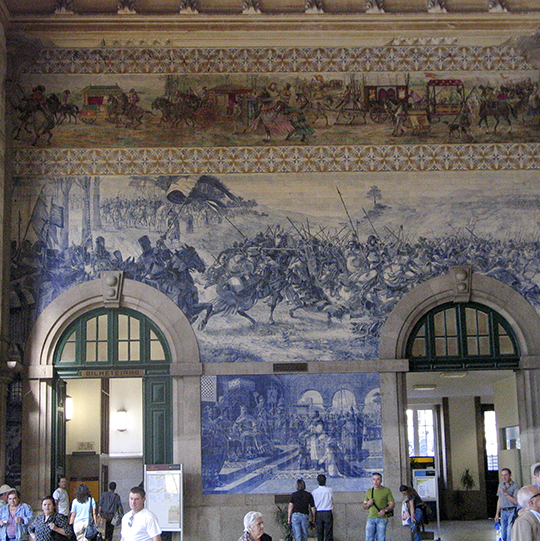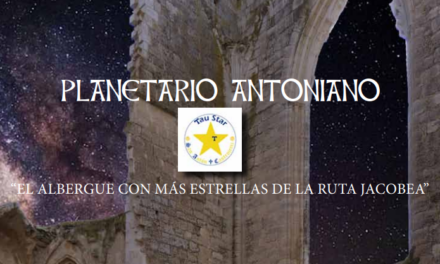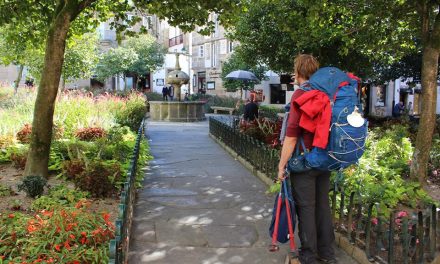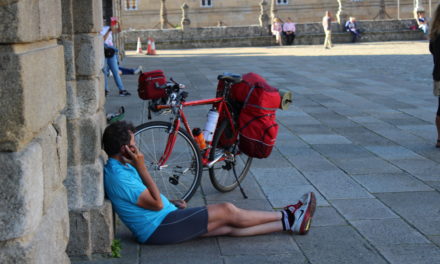In the Middle Ages the Portuguese Way was developed on the fluvial, maritime and terrestrial routes traced by the Romans and the Muslims. Its antiquity could be as great as that of the French Way, its origin being -according to some historians- a political path of reconquest and expansion of the kingdom of León. But the truth is that in the twelfth century, when Portugal emerged as an independent kingdom of Castile and Leon, the cartographer and geographer Al-Idrisi already points out the existence of two consolidated routes linking the cities of Coimbra and Santiago: one by sea and another by land.
We know that the fluvial and maritime routes were more travelled in other centuries than at present. This was above all because they were faster, which is why they are so present in the legends and Jacobean traditions of Portugal. However, often these sea lanes could not be used, especially during the winter, and this factor contributed to the rapid consolidation of land routes. It is on the roads where we can study and verify traces of the pilgrimage to Compostela, for example through the documentation that certifies the existence in the fifteenth and sixteenth centuries of many inns, hostels and hospitals of pilgrims on the roads between Lisbon and Compostela.
A central fact for the consolidation of the land routes of the Portuguese Way was the pilgrimage to Santiago by Isabel of Portugal -the Rainha Santa- in the 14th century. The tradition links the itinerary followed by the queen in 1325 to places like Águeda and Arrifada, located south of the Douro River; the so-called Caminho da Rainha Santa, north of Barcelos, in the Serranía de São Gonzalo; and to places like Reguengo, in Valença do Minho, where, according to tradition, the pilgrim queen spent the night. In addition, there still exists tangible evidence of the pilgrimage of Isabel of Portugal: the staff with the tau-cross on the top that the church of Compostela gave her, which was later discovered in her sepulchre in the Santa Clara Church in Velha, near Coimbra.
The pilgrimage of Isabel of Portugal left behind traditions and legends but, also, practical improvements on the pilgrimage routes and its infrastructures, because in her will the queen left an important sum towards the maintenance and development of pilgrim hospitals in the Kingdom of Portugal.
Another historical aspect that contributed to the consolidation the routes of the Portuguese Way to Compostela, was the importance that the Order of the Knights of Santiago had in Portugal. This Military Order was founded in order to defend the Extremadura border, but it also offered hospitality and protection to pilgrims, and was very much present in places such as Braga and Tomar.
Most of the pilgrims from the same country traveled through the Portuguese roads and routes to Santiago, but there was also a great flow of European pilgrims from different nations, mainly high clerics, members of royalty, nobles and knights, traveling through the different courts of Europe, all of them going to visit the tomb of Santiago. Many of these pilgrims left records of their itineraries, almost always on horseback, and the extensive route of their stages, between 25 and 60 kilometers.
The resurgence of the Portuguese Way at the end of the 20th century was almost equal in importance to that of the French Way. In order to explain why we must first acknowledge the commitment of public institutions, but also the associations of pilgrims from Galicia and northern Portugal, such as those of Valença Do Minho and Ponte de Lima. Initially, the route known as Camino Central was marked and recovered. Soon others were added- such as the Coastal Road and the Inner Road, as well as several secondary roads. The success of this revitalization has been such that the Portuguese Way has become the second most travelled route of the Camino de Santiago, just a little less than the French Way.











